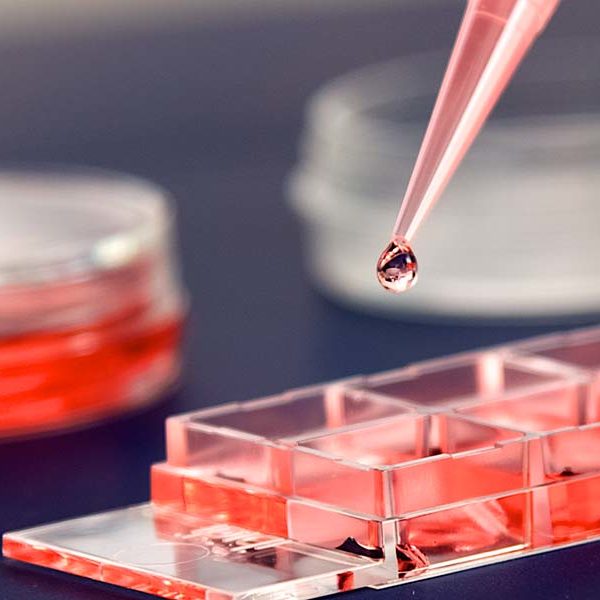A collaboration between UpNano and Xpect INX will allow users to directly print structures containing living cells, from the nanometer scale to the centimeter scale. UpNano’s latest printer uses a specialized hydrogel that mimics extracellular fluid, keeping cells healthy and alive during the print process and afterwards.
The NanoOne Bio is a bioprinter based on UpNano’s NanoOne two-photon polymerization printer. Two-photon polymerization (2PP) is a process that relies on a light-sensitive resin that only hardens at a point when it absorbs two photons at the same time. Because it hardens at specific places and stays liquid everywhere else, 2PP can make very complex structures on the nanometer scale. In 2019, UpNano developed the NanoOne printer, with print speeds fast enough that it can print on the centimeter, millimeter, and micrometer scales in only a few hours. UpNano researchers found that the printer’s powerful 780 nm red light laser isn’t harmful to living cells, and the printer’s fast writing speeds put less stress on living cells.
The NanoOne Bio prints in a hydrogel that UpNano co-developed with Xpect INX. Currently, Xpect INX has a whole range of bioinks, but this hydrogel is the only commercially-available resin that lets users embed living cells into 3D printed structures for biological applications. Because the hydrogel is made with a structure like the “extracellular matrix” that surrounds cells in a living body, users can take living cells directly out of a culture plate, embed it in the hydrogel, and load it into their printer.

Cells can be taken directly out of a 2D tissue culture and added into the new hydrogel (Image via UpNano).
“The hydrogel mimics the natural cellular environment and is biodegradable, thereby allowing the cells to gradually substitute the material with newly formed tissue,” said Jasper Van Hoorick, project lead at Xpect INX.
This has important implications for biomedical and pharmaceutical research. Today, we generally test drug interactions in 2D cell cultures like petri dishes, but a 2D environment means that researchers aren’t seeing all the communication between the cells that would happen in living tissue.
“Cells growing in 2D on a culture plate on standard growth media encounter a far from natural physical environment and a lack of interaction with surrounding cells in all directions, as observed in living tissues”, said UpNano co-founder Denise Mandt.
Having 3D structures printed from real cells will let researchers make “labs-on-a-chip”, or entire laboratory processes onto chips a few centimeters across. In this case, that means extracellular environments that mimic living tissues, and give researchers a better idea of how drugs might act on normal human cells. And because the NanoOne prints very quickly, those environments can be printed rapidly on the centimeter scale.
Subscribe to Our Email Newsletter
Stay up-to-date on all the latest news from the 3D printing industry and receive information and offers from third party vendors.
Print Services
Upload your 3D Models and get them printed quickly and efficiently.
You May Also Like
Bambu Lab Launches H2S at $1,249 — Exploring the Strategy Behind Its Price and Positioning
Bambu Lab has launched the H2S, a single-nozzle 340×320×340 mm printer that starts at $1249. The printer has twice the build volume of the X1C and is 30% faster. Billed...
Printing with a Purpose: Saber Data Partners with 3DPrinterOS to Help Nonprofits for Free
Nothing warms my heart more than the 3D printing community coming together to help others. Technology and IT services firm Saber Data, a division of the TyRex Group of advanced...
Bambu Lab Targets the Enterprise Market with New H2D Pro Printer
As we learned from our interview with Cedric Mallet, Bambu Lab had not considered the enterprise and manufacturing market when it launched its first 3D printer. Nonetheless, thousands of businesses...
Daring AM: Changing Landscape for 3D Printed Guns
3D printed guns continue to draw attention from lawmakers, tech platforms, and law enforcement. Difficult to trace, these ghost guns can be made at home with a 3D printer and...































